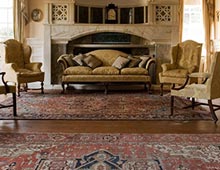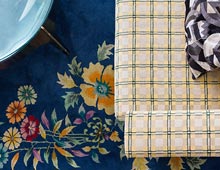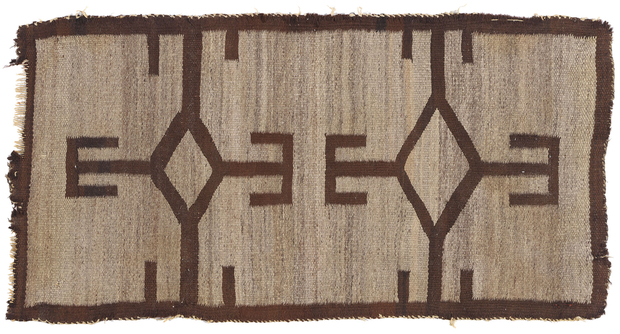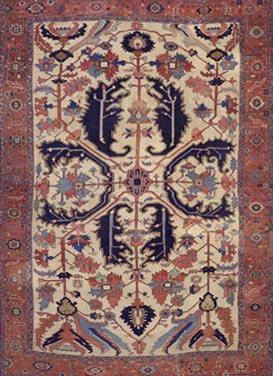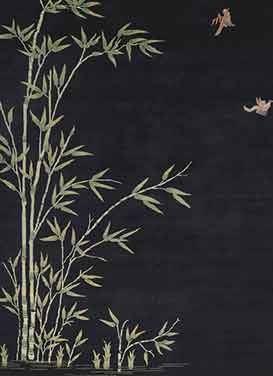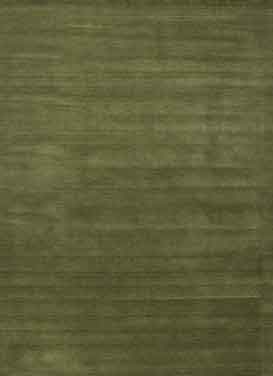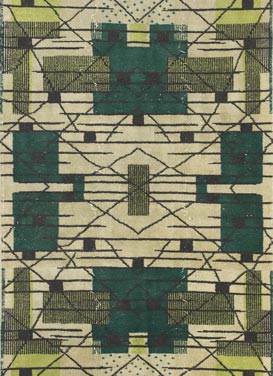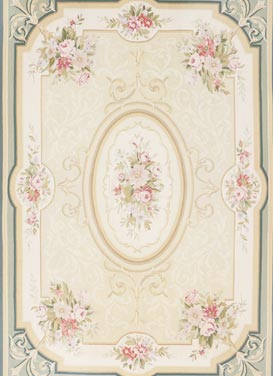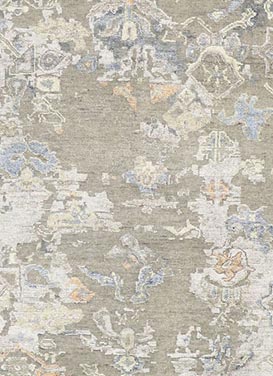- Inquiry
Description
79216 Late 19th Century Antique Transitional Navajo Rug, 01'10 x 03'06.
Woven in the twilight of the 19th century, this handwoven wool transitional Navajo rug—also known as a double saddle blanket—embodies the profound shift in Dine textile artistry during a pivotal era. Created in the 1880s, this piece belongs to the celebrated transitional period, when Navajo weavers began adapting their traditional blanket-making heritage to meet the evolving needs of Anglo markets, yet remained rooted in cultural resilience. The format and dimensions suggest this was intended for practical equestrian use—folded in half over a saddle—while still serving as a canvas for spiritual symmetry and abstract expression.
This textile’s architecture is striking in its stark restraint: two diamond medallions anchor the composition along a vertical axis, each radiating out with stepped linear elements that suggest cornstalks, water sources, or four-directional pathways. These forking extensions—rendered in dark brown against a neutral field of variegated taupe, tan, gray, and undyed churro wool—may be interpreted as echoes of Navajo cosmology: the diamond symbolizing the eye of protection or the center of the cosmos, and the extensions signifying motion, connection, and flow. The absence of elaborate decoration does not diminish its voice; instead, it heightens the solemn power of the geometry and the land-based symbolism it transmits.
The earthy palette of brown and taupe reflects the intimate relationship Navajo weavers maintained with their sheep and natural landscape. Before the widespread use of commercial dyes and Germantown yarns, Navajo artisans relied on the hues of undyed, handspun wool—often from the prized Navajo-Churro sheep. This wool not only provided durability but also lent the piece an organic tonal variation known as abrash, which adds a gentle rhythm to the overall design. The wool's coarse texture and clearly visible weft-work further emphasize the handmade nature of the piece, bringing the viewer closer to the weaver's hand and the tempo of the loom.
As a piece of interior art, this transitional Navajo rug carries an understated grandeur. Its linear austerity and grounded tones allow it to merge seamlessly into contemporary minimalist, rustic, or Southwest Modern interiors. Whether displayed in a curated gallery wall, draped over a modern bench, or laid with reverence in a Santa Fe adobe, this antique weaving offers more than visual interest—it whispers of a time when utility and beauty were one, and when sacred patterns were spun not merely for the eye, but for the soul of the land.
- Distressed.
- Abrash.
- Handwoven wool.
- Made in America.
- Measures: 01'10 x 03'06.
- Pile Height: 0.13 of an inch.
- Date: 1880's. Late 19th Century.



